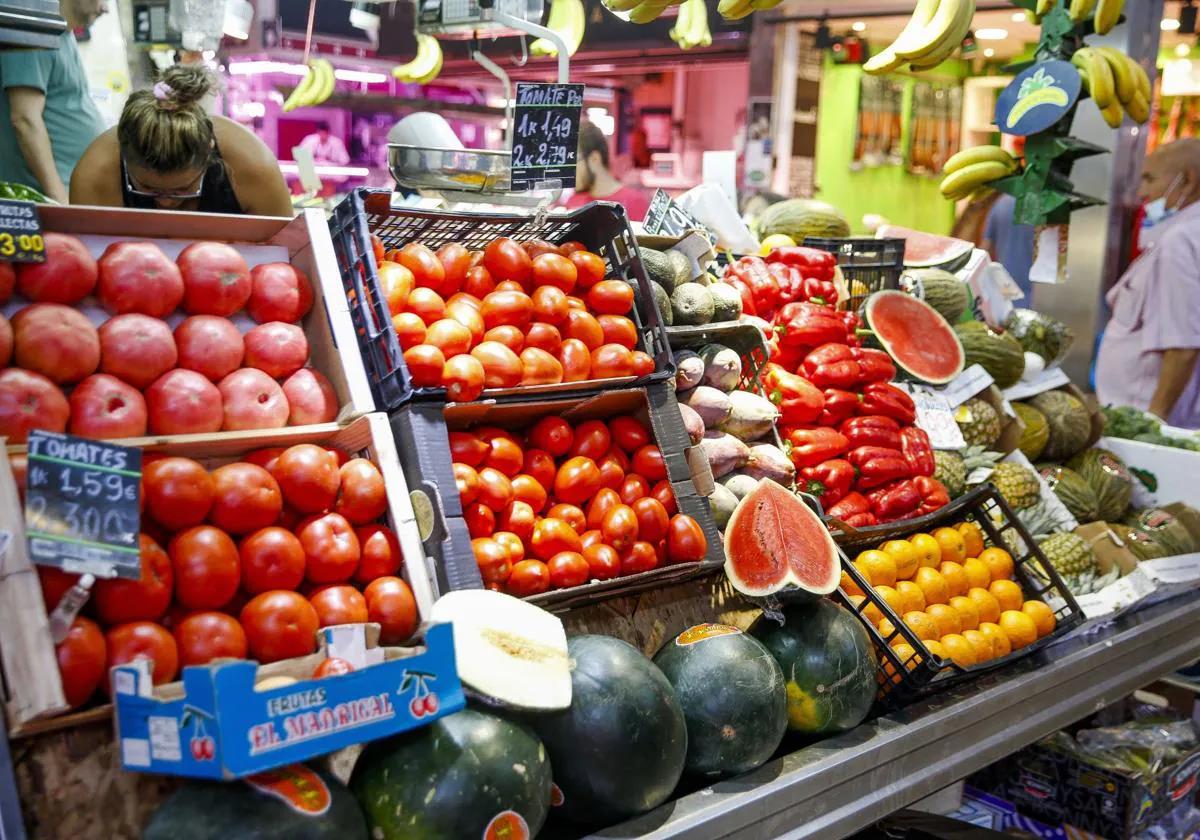

Sections
Highlight

Shopping basket costs have maintained the trend of moderation that had come to a screeching halt in October following the elimination of the IVA sales tax subsidy on certain food items in Spain. With the bounce back down to 1.9% in the tenth month of the year, food inflation remained at 1.7% year-on-year in November, the lowest rate in more than three years since October 2021.
The figure is also below the general CPI (consumer price index), which closed the month with a notable rise of six tenths of a percentage point to 2.4% due to the base effect produced by electricity and fuel prices.
With regard to food products, the national government's Ministry of Economy points to "the good evolution of the prices of some products, such as oil, which in the last month has continued to fall and has accumulated a year-on-year fall of 3%." In the specific case of olive oil, one of the great headaches for consumers in recent times, the price per litre fell by 3.2% compared to October and by 3.7% in year-on-year terms.
That, however, is a comparison with October 2023 when prices were skyrocketing with increases of close to 70% compared to the previous year. Hence the 4.1% price drop accumulated by this liquid gold in 2024 is not enough to compensate for the budgetary juggling act that consumers have had to deal with just to keep this product in their shopping basket.
Also noteworthy is the sharp rise in the price of chocolate, which rose by 21.9% compared with a year ago, being the second product with the highest price increase in November of all the items analysed by Spain's national statistics institute (INE) to compile the CPI. All this at a time when prices for cocoa as a raw material have soared in the face of strong uncertainty over the supply for the coming weeks due to production problems in this sector of the agriculture industry.
The INE also pointed out that housing, where the annual change stood at 7.4% (3.2 points higher than in the previous month) was the category that stood out most for its influence on the rise in the general CPI. As already mentioned, this increase was a consequence of the rise in electricity prices compared with the fall in the same month in 2023.
Likewise transport, whose annual rate increased by two points, to -1.0%, also exerted upward pressure. "This outcome was due, for the most part, to the rise in fuel and lubricant prices for personal vehicles, compared with the fall in November of the previous year", says the INE.
Within the overall CPI increase to 2.4%, in addition to chocolate, passenger transport shot up by nearly 42%. There were also strong price rises in other items that the INE also takes into account in its calculations, such as jewellery (+18%) and domestic package holidays (+13%).
On a monthly basis the CPI rose by 0.2% between November and October this year, its fastest pace for a November since 2021. The biggest price increases in the period were international flights (6.6%), women's clothing (4.9%) and electricity (4.9%). Hotels fell the most, with prices falling by 12%.
In any case, the Ministry of Economy is satisfied with how the CPI is progressing. "The reduction shows the effectiveness of the economic policy measures put in place, which are making it possible to combine the highest growth among the main economies of the eurozone with continued containment of inflation", says the ministry headed by Carlos Cuerpo. "These factors, together with the positive evolution of the labour market, are making it possible to improve the purchasing power of citizens and the real income of households."
The market had been assuming for weeks that inflation would pick up in the final stretch of the year, also due to the base effect when comparing the data with the last quarter of 2023. Moreover, the core rate, which is the least volatile as it does not include energy or fresh products in its calculation, moderated by one tenth of a percentage point in November.
"If we look at this monthly variation it was below the historical average for the third consecutive month," explained Santiago Martínez Morando, head of Economic and Financial Analysis at Ibercaja. "This indicates that the reduction in inflationary pressures continues."
The consensus is optimistic that the European Central Bank (ECB) will be able to keep inflation in check. The monetary body agreed to a cut of 25 basis points at its latest meeting last week, an adjustment that some voices saw as insufficient in the face of the challenges to stimulate the very weak economies in some countries in the EU zone such as Germany and France. Even the body itself put a larger adjustment of 50 basis points on the table at its meeting last Thursday.
In contrast, average inflation over the last 12 months in Spain has stood at 2.8%, maintaining the downward path with respect to the peak reached in 2022. Specifically, it is one point lower than last year's average and almost three times lower than in 2022.
This data item is the basis for calculating how much the pension will rise, which from 2022 is automatically increased in line with average inflation over the last 12 months (from December to November), without the government having to consider it.
Publicidad
Publicidad
Publicidad
Publicidad
Esta funcionalidad es exclusiva para registrados.
Reporta un error en esta noticia

Debido a un error no hemos podido dar de alta tu suscripción.
Por favor, ponte en contacto con Atención al Cliente.

¡Bienvenido a SURINENGLISH!

Tu suscripción con Google se ha realizado correctamente, pero ya tenías otra suscripción activa en SURINENGLISH.
Déjanos tus datos y nos pondremos en contacto contigo para analizar tu caso

¡Tu suscripción con Google se ha realizado correctamente!
La compra se ha asociado al siguiente email
Comentar es una ventaja exclusiva para registrados
¿Ya eres registrado?
Inicia sesiónNecesitas ser suscriptor para poder votar.